Parents often notice mouth breathing long before a clinician mentions it. Open lips during quiet play, snoring at night, a dry mouth on waking, frequent colds, restless sleep. None of these are trivial on their own, yet together they hint at an airway that is working harder than it should. The good news is that small, consistent changes can make a real difference. One practical tool many families use is MyoTape for children, a gentle elastic tape that surrounds the lips to prompt a natural lip seal and encourage nasal breathing.
This guide brings together what mouth breathing does to growing faces and brains, how MyoTape works, and how to introduce it with care. You will also find tips to support healthy nasal breathing during the day and through the night.
Why mouth breathing in children matters
Humans are designed to breathe through the nose most of the time. When a child habitually breathes through the mouth, the airway is bypassing the nose’s filtration, humidifying and warming functions. That has knock-on effects for sleep, dental development and behaviour.
- Sleep quality often drops. Children may snore, grind teeth, or wake unrefreshed. Daytime fatigue can look like inattention or hyperactivity.
- Oral health can suffer. Dry mouth encourages cavity-causing bacteria. The tongue often rests low in the mouth instead of on the palate.
- Facial growth patterns can shift. A low tongue posture and open lips are linked with a narrow upper jaw, longer face height and dental crowding.
- Airways may be more reactive. The nose filters pollen and particles and produces nitric oxide, which supports local blood flow and has antimicrobial effects.
Short bouts of mouth breathing during heavy exercise are normal. It is the pattern of habitual mouth breathing at rest and during sleep that deserves attention.
What MyoTape is and how it differs from standard mouth tape
MyoTape is an elastic, hypoallergenic tape designed to sit around the lips rather than across them. The goal is not to shut the mouth, but to nudge the lips together so the nose does the breathing. Children can still open their lips to speak, cough or call out.
Key design points:
- The tape forms a ring around the mouth and does not cover the lips.
- Gentle elastic tension prompts a lip seal without force.
- The child version is sized for smaller faces and has softer adhesive.
This is different to placing a strip across the lips. Many parents are understandably wary of anything covering a child’s mouth. With MyoTape, the centre remains uncovered, which lowers anxiety and allows quick mouth opening whenever needed.
Ages, sizing and basic use
MyoTape for children is typically made for ages 4 to 16. If your child is younger, speak with a clinician trained in paediatric airway before considering any taping. For older teens with adult facial dimensions, the adult size may fit better.
- Choose the child size that matches face width, not weight or age alone.
- Aim for clean, dry skin. Avoid creams around the mouth right before application.
- Apply in front of a mirror at first, with the child controlling the placement.
- Start with short daytime sessions before trying it during naps or nights.
Most families treat each piece as single use. That keeps the adhesive predictable and reduces the chance of irritation.
Safety first: when to pause and when to seek advice
Nasal breathing is the goal, not taping for its own sake. Always check that the nose is clear and comfortable.
Avoid MyoTape when:
- The child has significant nasal blockage or a heavy cold
- There is frequent vomiting or reflux flares
- Skin around the mouth is broken, sunburnt or reactive to adhesives
- There is a known breathing disorder that has not been assessed by a clinician
- The child is not comfortable with the idea, even after a gentle introduction
Seek medical or dental assessment if you notice persistent snoring, witnessed pauses in breathing, choking during sleep, chronic mouth breathing from infancy, or recurrent ear and sinus infections. An airway-focused dentist, ENT, GP or myofunctional therapist can look for root causes like enlarged adenoids or tonsils, allergic rhinitis or tongue tie.
Why nasal breathing matters for growing kids
Shifting breathing to the nose does more than feel quieter. It shapes how the face and airway develop.
- The tongue rests on the palate, which helps widen the upper jaw and support tooth alignment.
- The nose humidifies air, which protects the lower airway and reduces dryness.
- Nasal airflow stimulates nitric oxide production in the sinuses. This gas supports local defence and optimises blood flow in the lungs.
- Diaphragmatic breathing becomes more natural, easing the load on the neck and upper chest muscles.
Parents often see calmer sleep, fewer dry-mouth mornings and a more stable bite over time when nasal breathing becomes the default.
A gentle step-by-step plan to introduce MyoTape
Rushing can backfire. A calm, child-led approach builds trust and makes the habit stick.
Week 1: curiosity and comfort
- Let your child touch and stretch the tape. Show how it sits around your own lips first.
- Try a 3 to 5 minute session while reading a book or watching a favourite short video.
- End the session before your child asks to stop. Positive endings matter.
Week 2: tiny practice blocks
- Two sessions per day, 5 to 10 minutes each, during calm activity.
- If the nose feels stuffy, skip and do a saline rinse or steam before trying again.
- Add a sticker chart or points system. Reward the effort, not just the outcome.
Week 3: nap trials and quiet play
- One daytime nap with the tape in place, supervised at first.
- Extend one play session to 20 minutes. Remind them they can talk with the tape on.
- Keep it relaxed. If the tape becomes a battleground, scale back.
Week 4 and beyond: night use
- Try at bedtime after a calm routine and a clear nose.
- If your child removes the tape in their sleep, that is common. Praise any minutes achieved and try again the next night.
- Aim for consistency, not perfection. Many children adapt over two to four weeks.
Make nasal breathing easier: simple home strategies
Taping alone does not fix a blocked nose or a low tongue posture. Layer in practices that make nasal breathing feel natural.
- Clear the nose: daily saline rinse or spray during allergy season, gentle blowing technique, bedroom humidity in winter.
- Tame allergens: wash bedding weekly at 60°C, encase pillows and mattress, vacuum with a HEPA filter, consider a pet-free bedroom.
- Encourage chewing: offer tougher textures where appropriate, like carrot sticks or crusty bread, to work the jaw muscles.
- Build tongue posture: light suction hold of the tongue to the palate, a few seconds at a time, repeated during the day.
- Posture check: gentle reminders to keep lips together and tongue up during reading and screens.
Small habits, repeated often, beat occasional heroic efforts.
What progress looks like
Changes often show up first in daytime habits and morning comfort.
- Lips rest together more often at rest
- Less drool on the pillow
- Fewer dry mouth complaints on waking
- Quieter sleep sounds
- Better tolerance for nasal breathing during light exercise
Dental changes and facial growth patterns take longer. Regular dental reviews can track arch width and bite over months and years.
Troubleshooting common hurdles
Irritated skin
- Do a patch test on the cheek for 30 minutes before first use.
- Shorten sessions for a few days if redness appears. Switch to a different adhesive or apply a thin barrier product earlier in the day, not right before taping.
Nose feels blocked
- Use saline and gentle nasal breathing drills before taping.
- See a clinician if blockage is persistent, one-sided or linked with pain.
Anxious child
- Let the child remove the tape themselves to feel in control.
- Use a timer with a cheerful sound. Start tiny, even 60 seconds, and build.
Tape falls off
- Clean skin helps. Remove lip balm just before use.
- Try a different size or a fresh piece. Sweaty play may loosen adhesive.
How MyoTape compares with other options
A quick view can help you choose what fits your child and your goals.
| Option | What it is | Pros | Cons | Typical age fit |
|---|---|---|---|---|
| MyoTape child ring | Elastic tape placed around, not across, the lips | Encourages lip seal while keeping mouth accessible, child friendly, supports daytime training and sleep | Needs clear nose, adhesive tolerance varies | 4 to 16 |
| Straight lip strip | Adhesive strip across the lips | Strong prompt for lip closure at night | Covers lips, some children dislike the feel, harder to speak or cough | Older teens and adults under guidance |
| Chin strap | Fabric strap supporting the jaw upwards | No adhesive, reusable | Can push jaw backward if not well chosen, may not fix lip seal alone | Teens and adults under professional advice |
| Myofunctional therapy | Exercises for tongue, lips and face muscles | Addresses root habits, supports long term change | Requires guidance and regular practise | All ages, exercise set adapted to child |
Many families blend MyoTape with myofunctional exercises to retrain tongue posture and swallowing patterns.
FAQs that parents ask
Will my child be able to breathe if they need to open their mouth?
- Yes. The centre remains uncovered and the tape stretches. Children can open their lips, cough or call out.
Is it safe to use every night?
- If the nose is clear, the child is comfortable and there are no contraindications, night use is common. Check skin and comfort daily.
What if my child has allergies?
- Manage the allergies in parallel. Use MyoTape only when the nose is reasonably clear. Speak with your GP about allergy control.
Can we keep using a piece for multiple nights?
- Most families prefer single use for hygiene and consistent adhesion. Follow the product guidance from the manufacturer.
What if my child has braces?
- Many children with braces can use MyoTape because it sits on the skin, not the lips. Always check with the orthodontist.
Teaming up with professionals
Mouth breathing often has multiple drivers. A short list of clinicians who often help:
- GP or paediatrician for overall health and allergy care
- ENT for nasal obstruction, adenoids and tonsils
- Dentist or orthodontist with airway focus for jaw growth and bite
- Myofunctional therapist or speech therapist for tongue posture and orofacial habits
Share observations: snoring clips, photos of resting posture, frequency of dry-mouth mornings, and how your child responds to MyoTape. Good notes make better plans.
Evidence and what we currently know
Nasal breathing benefits are well documented across respiratory physiology and dental literature. Mouth breathing correlates with altered facial growth, narrower dental arches and sleep-disordered breathing in children. Studies on tapes that encourage lip seal are growing, though still limited compared with broader airway research. Early results point to improved nasal breathing time and quieter sleep in selected children when tapes are used as part of a wider plan that includes addressing nasal obstruction and orofacial habits.
That is a key point. MyoTape can be an effective prompt, and it works best within a wider, child-centred plan.
Everyday routines that help
Morning
- Quick check: lips together, tongue on the palate
- Gentle nasal rinse during allergy season
- Breakfast with foods that require chewing
Afternoon
- Short MyoTape session during reading or homework
- Breathing games through the nose during light play
Evening
- Warm shower or steam to clear the nose
- Calm screens-off window to reduce over-breathing
- Bedtime MyoTape once the child is relaxed and the nose is clear
These routines take minutes, not hours. Consistency matters more than intensity.
Buying tips and care
- Purchase the child version from a reputable supplier to ensure correct adhesive and sizing.
- Check the expiry date. Adhesives can degrade over time.
- Store in a cool, dry place. High heat weakens adhesive.
- Keep a simple log of use and comfort. Adjust the plan based on your child’s feedback.
If skin sensitivity remains an issue after trialling different products, pause and ask a clinician for alternatives.
When MyoTape might not be the right choice
Some situations call for a different first step:
- Severe nasal blockage, frequent nosebleeds or a deviated septum that limits airflow
- Significant anxiety around the mouth or sensory issues that make adhesives intolerable
- Suspected sleep apnoea with witnessed pauses in breathing
In these cases, prioritise medical assessment, nasal care or therapy-led exercises. MyoTape can often be introduced later, with the child’s confidence on your side.
A realistic outlook for families
Change is rarely linear. Two good nights can be followed by a cold that resets progress. That does not erase the gains. Keep the aim simple: more time with lips together and the nose doing its job. Celebrate small wins. Stay patient and curious.
Parents often report that once nasal breathing becomes comfortable, children prefer it. They wake with a fresher mouth, they snore less, and their faces look more relaxed at rest. MyoTape can be a useful prompt to get there, paired with good nasal care and support from the right professionals.
If mouth breathing has been part of your child’s life for years, you are not late. Start with comfort, make it playful, and keep the steps small. The airway will thank you.











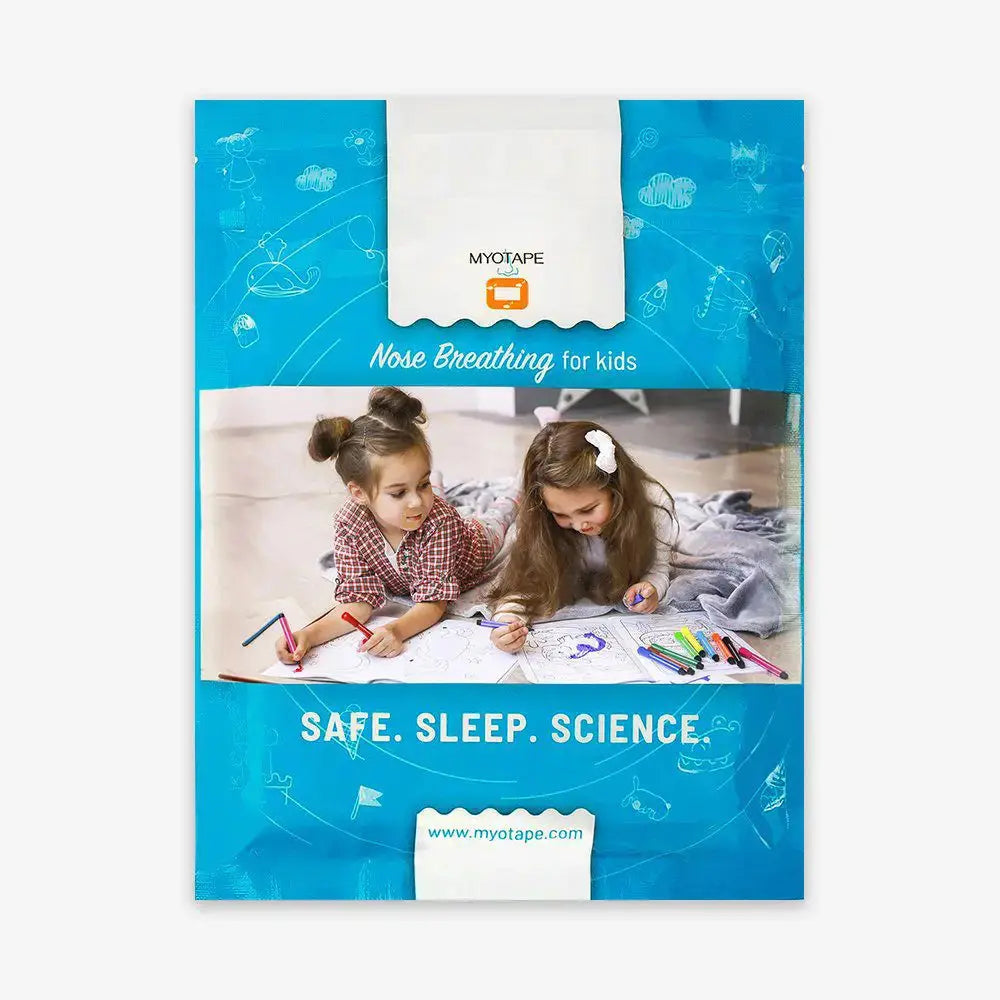
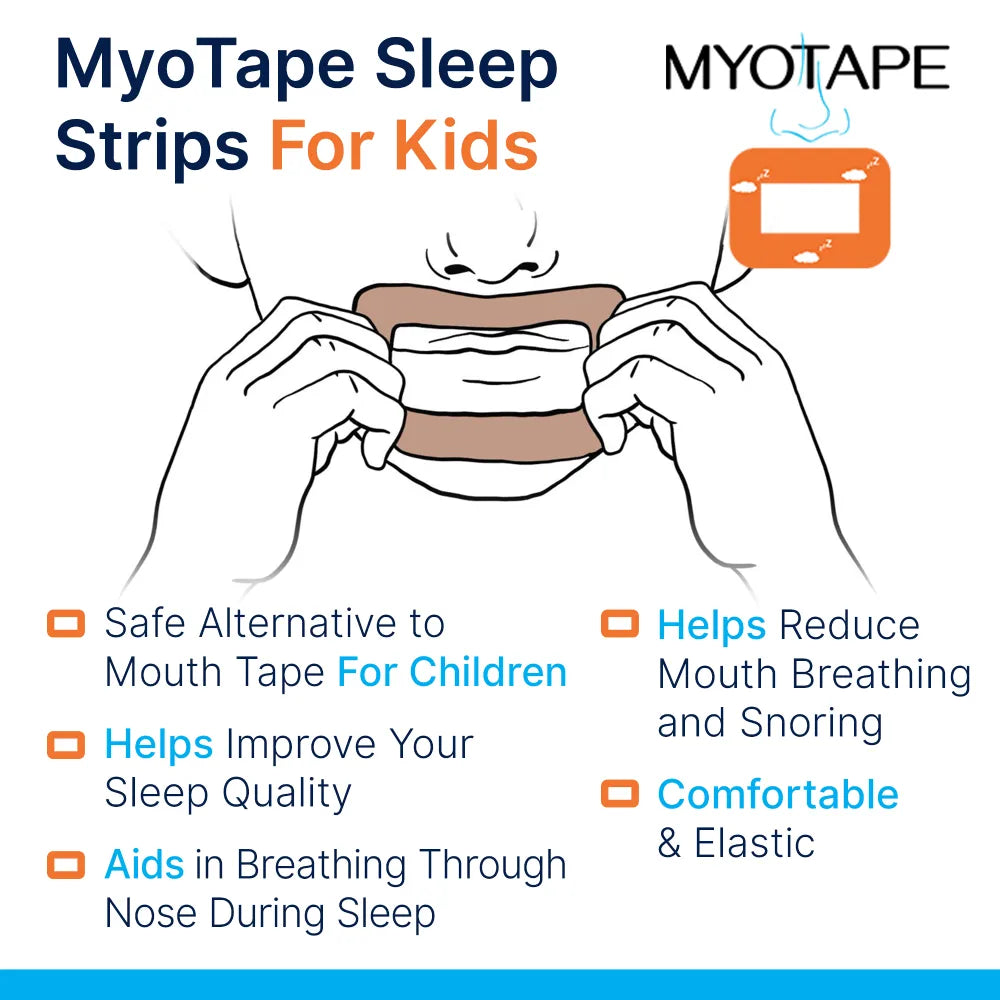
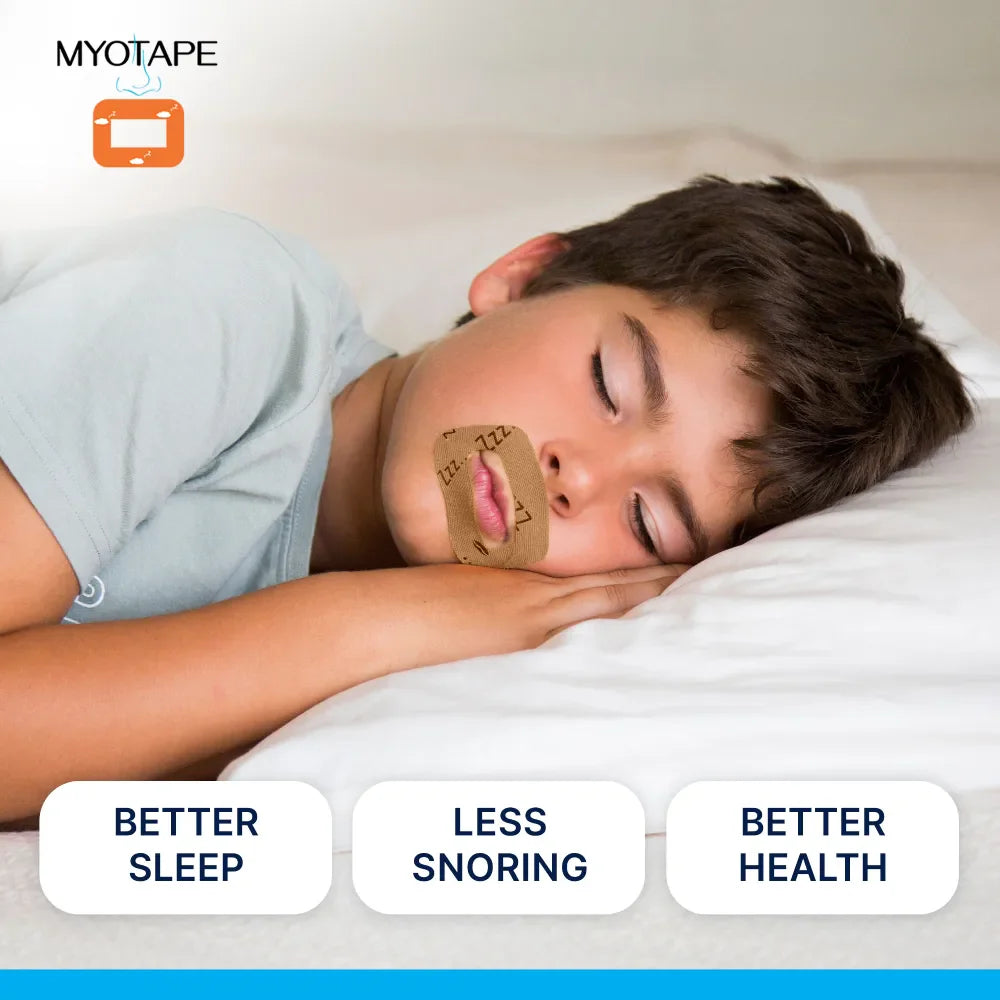
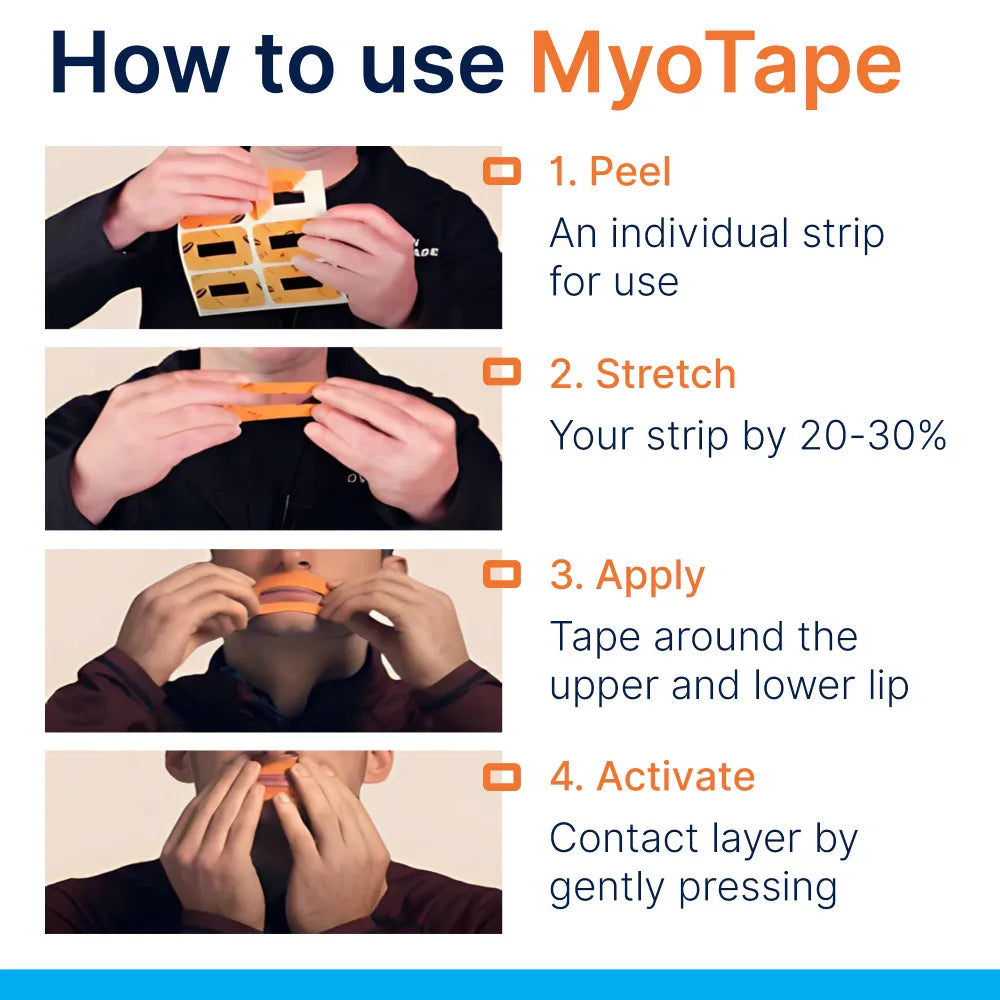
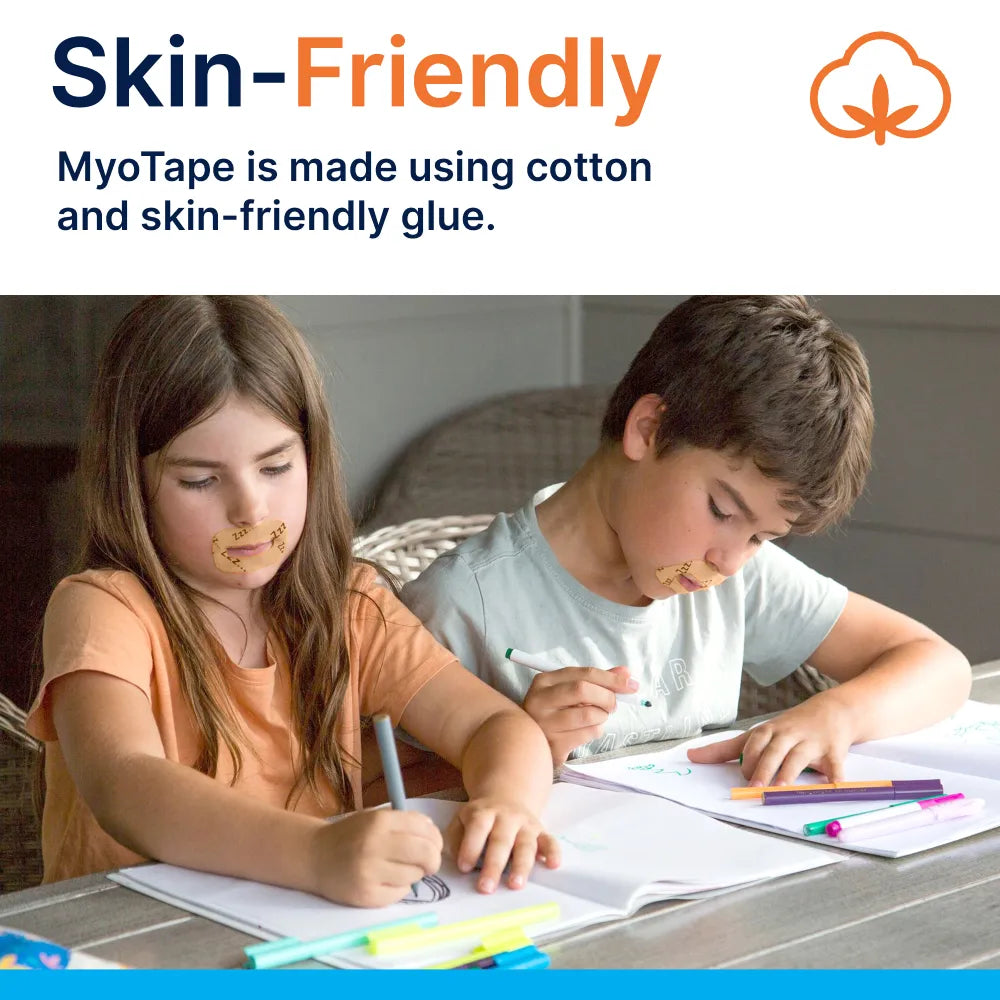










0 comments